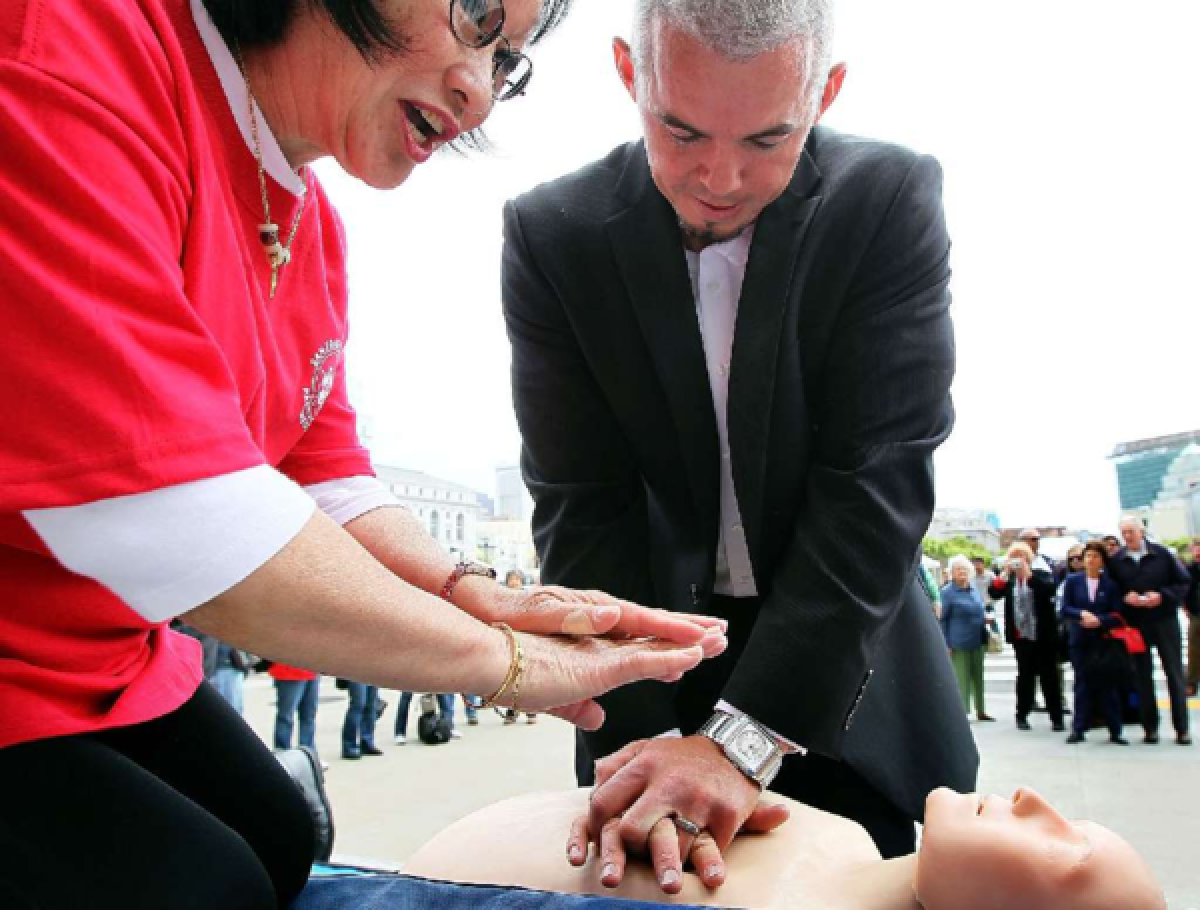Bystander CPR linked to improved survival for cardiac arrest victims

A nationwide effort to promote CPR appears to have boosted survival rates for people who went into cardiac arrest in their homes, offices, grocery stores, movie theaters or anywhere else that wasn’t a hospital, new research shows.
The data come from Denmark, a country with only 5.6 million people. But the findings could offer useful lessons for the United States and the rest of North America, where an estimated 300,000 people suffer cardiac arrest away from a hospital each year.
Ten years ago, the Danish Resuscitation Council reported that bystanders performed CPR in fewer than 20% of the cases in which it was needed. Also, fewer than 6% of people who suffered cardiac arrest were still alive 30 days later.
So Denmark launched a multi-pronged campaign to boost both statistics. Among other things, training in cardiopulmonary resuscitation became mandatory in elementary schools, and people applying for a driver’s license had to learn CPR as well. About 150,000 free CPR instruction kits were handed out to residents, and automated external defibrillators (AEDs) were installed in public places. Even the operators who staff emergency dispatch lines began giving better guidance by phone.
To get a sense of whether these initiatives were paying off, Danish researchers used national databases to compare the year 2001 to 2010. What they found was quite encouraging:
During that 10-year period, the proportion of patients who who got CPR from a bystander increased from 21.1% to 44.9%, the researchers found. (Use of AEDs rose slightly, from 1.1% to 2.2%.)
Cardiac arrest survival rates improved as well. In 2001, only 7.9% of patients who collapsed outside of a hospital were still alive when they got to a medical center; by 2010, that figure had risen to 21.8%, the study found. The proportion of patients who were still alive after 30 days rose from 3.5% to 10.8%. Thirty-day survival improved for patients who did get CPR from a bystander and for those who didn’t, but the overall increase “was achieved mainly among patients who had received bystander CPR,” the researchers wrote.
The design of the study didn’t allow the researchers to say whether any particular part of the pro-CPR strategy deserved the most credit for helping patients survive after cardiac arrest. It’s even possible that none of the CPR initiatives mattered as much as improvements in hospital care, such as the use of therapeutic hypothermia or newer revascularization techniques.
“The reason for improved survival is probably multifactorial and most likely related to improvements in each of the links in the chain of survival,” the researchers wrote. Still, the fact that bystander CPR rose along with overall survival rates strongly suggests that CPR is an important part of the equation.
The results appear in Wednesday’s edition of the Journal of the American Medical Assn.
If you’d like to learn CPR, you can find a class through the American Heart Assn. or the American Red Cross.
ALSO:
Rates of heart attacks increasing for middle-age women
Sports is a strain on fans’ hearts
College binge drinking raises risk of heart disease
Return to Science Now.







